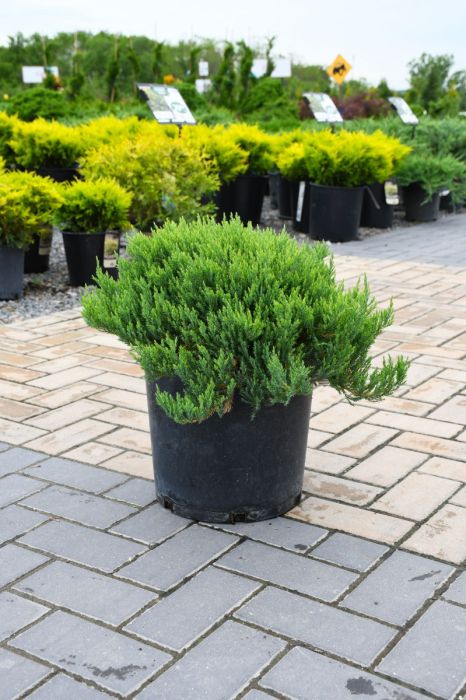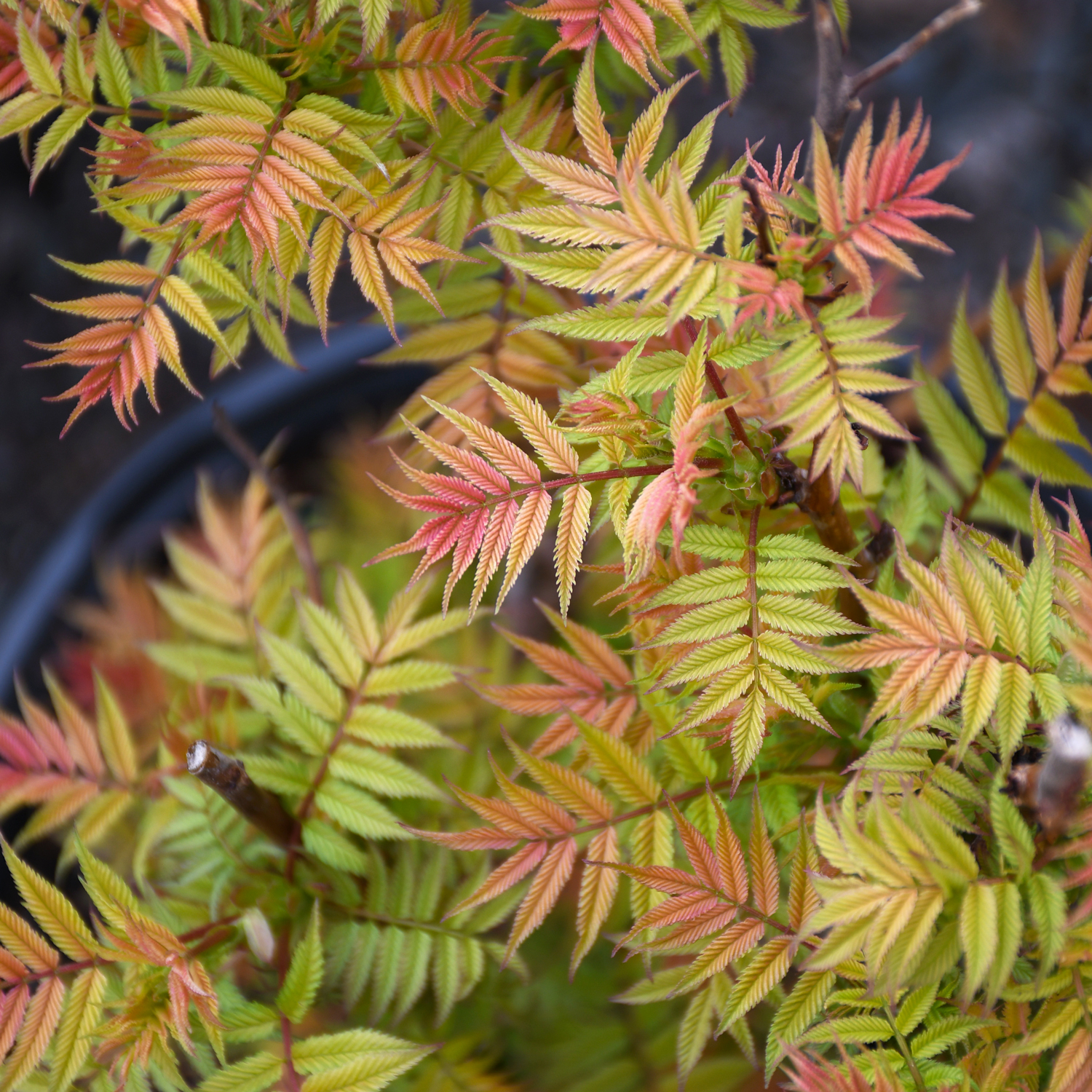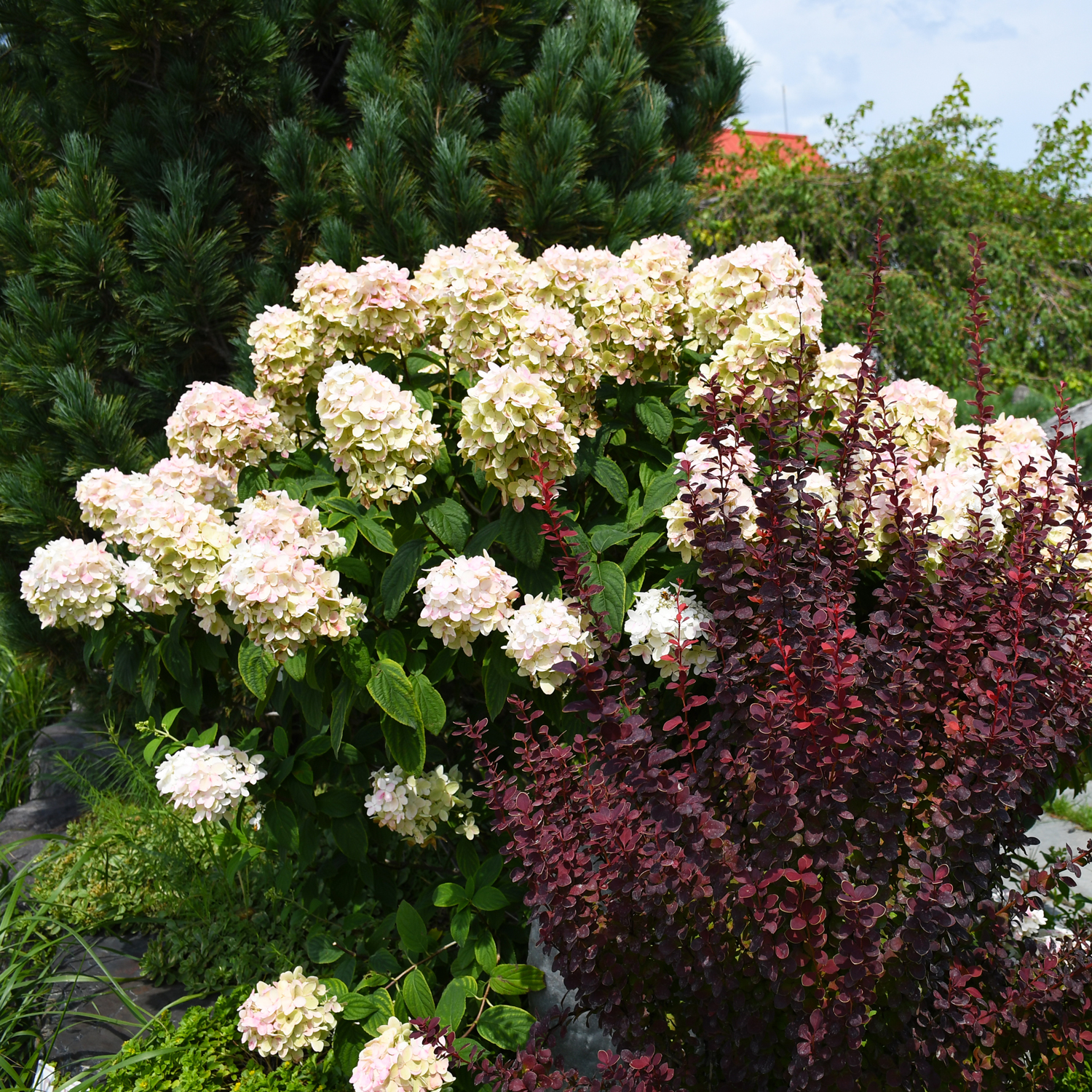Juniperus, Savin Juniper 'Blue Forest'



- Sun Preference
- Full-Sun
- save
Description
Short, ascending branches form a small blue forest. Use in rock gardens or as a groundcover.
Minnesota's Largest Selection of Shrubs
Elevate your landscaping with Gertens' unmatched variety of shrubs! Selecting the right shrubs for your backyard can enhance its beauty and functionality. Consider factors like sunlight, soil type, and mature size when choosing shrubs. For sunny areas, flowering shrubs like roses or hydrangeas can add color and charm. In shady spots, opt for shrubs like azaleas or hostas. Evergreen shrubs provide year-round interest and privacy, while deciduous shrubs offer seasonal color changes. At Gertens, we offer a wide selection of shrubs to suit every backyard need.
Details
Height: 12 inches
Spread: 4 feet
Sunlight: ![]()
Hardiness Zone: 4a
Description:
A unique and unusual groundcover; unlike other junipers, this variety has bright blue upright fronds which spread across the ground, resembles a very low forest of evergreen trees; a superb groundcover for home landscapes, very adaptable and hardy
Ornamental Features
Blue Forest Juniper has attractive blue foliage. The scale-like leaves are highly ornamental and turn purple in fall. Neither the flowers nor the fruit are ornamentally significant.
Landscape Attributes
Blue Forest Juniper is a dense multi-stemmed evergreen shrub with a ground-hugging habit of growth. It lends an extremely fine and delicate texture to the landscape composition which should be used to full effect.
This is a high maintenance shrub that will require regular care and upkeep, and is best pruned in late winter once the threat of extreme cold has passed. It has no significant negative characteristics.
Blue Forest Juniper is recommended for the following landscape applications;
- Mass Planting
- General Garden Use
- Groundcover
Planting & Growing
Blue Forest Juniper will grow to be about 12 inches tall at maturity, with a spread of 4 feet. It tends to fill out right to the ground and therefore doesn't necessarily require facer plants in front. It grows at a slow rate, and under ideal conditions can be expected to live for approximately 30 years.
This shrub should only be grown in full sunlight. It is very adaptable to both dry and moist growing conditions, but will not tolerate any standing water. It is not particular as to soil type or pH. It is highly tolerant of urban pollution and will even thrive in inner city environments. This is a selected variety of a species not originally from North America.
| SKU | Container Size |
| E0798AP | #2 Container (2 Gallon) |
| E0800 | #5 Container (5 Gallon) |
* Not all container sizes may be available at this time. See store for details on specific container size availability.
Blue Forest Juniper | Juniperus sabina 'Blue Forest'
Height: 12 inches
Spread: 4 feet
Sunlight: full sun
Hardiness Zone: 4a
Brand: Gertens
Description:
A unique and unusual groundcover; unlike other junipers, this variety has bright blue upright fronds which spread across the ground, resembles a very low forest of evergreen trees; a superb groundcover for home landscapes, very adaptable and hardy
Ornamental Features
Blue Forest Juniper is a dwarf conifer which is primarily valued in the garden for its broadly spreading habit of growth. It has attractive blue evergreen foliage. The scale-like sprays of foliage are highly ornamental and turn purple in the fall, which persists throughout the winter.
Landscape Attributes
Blue Forest Juniper is a dense multi-stemmed evergreen shrub with a ground-hugging habit of growth. It lends an extremely fine and delicate texture to the landscape composition which should be used to full effect.
This is a high maintenance shrub that will require regular care and upkeep, and is best pruned in late winter once the threat of extreme cold has passed. It has no significant negative characteristics.
Blue Forest Juniper is recommended for the following landscape applications;
- Mass Planting
- General Garden Use
- Groundcover
- Planting & Growing
Blue Forest Juniper will grow to be about 12 inches tall at maturity, with a spread of 4 feet. It tends to fill out right to the ground and therefore doesn't necessarily require facer plants in front. It grows at a slow rate, and under ideal conditions can be expected to live for approximately 30 years.
This shrub should only be grown in full sunlight. It is very adaptable to both dry and moist growing conditions, but will not tolerate any standing water. It is not particular as to soil type or pH. It is highly tolerant of urban pollution and will even thrive in inner city environments. This is a selected variety of a species not originally from North America.
More Information
| Available for Pre-Order | No |
|---|---|
| Sun Preference | Full-Sun |
| USDA Hardiness Zone | 4, 5, 6, 7, 8 |
| Common Family Name | Juniper |


